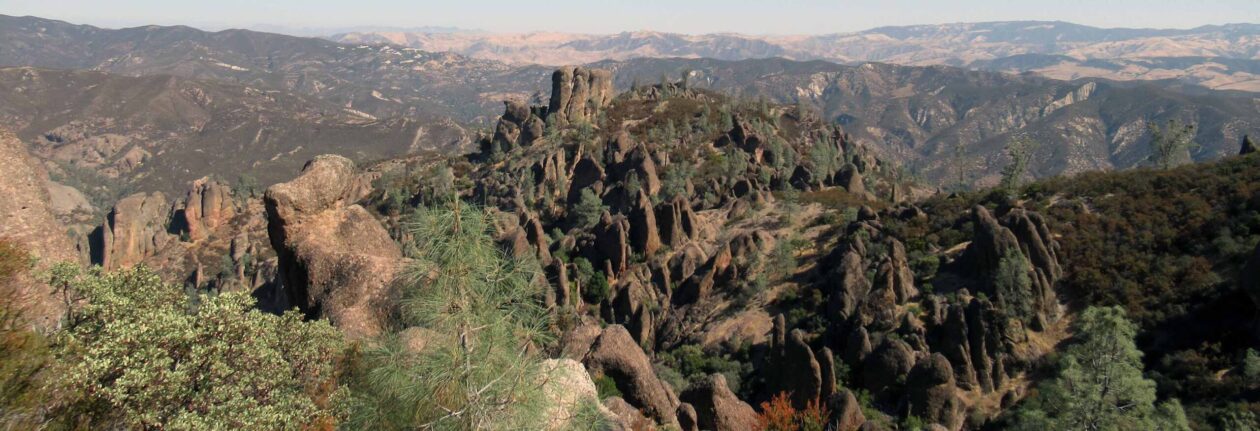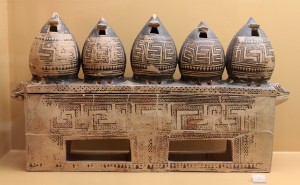Athens, Greece
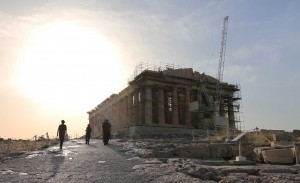
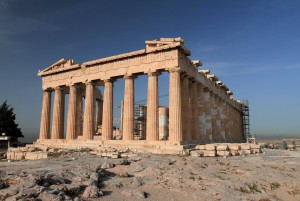
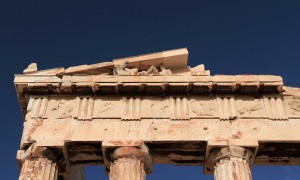
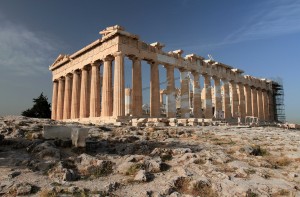
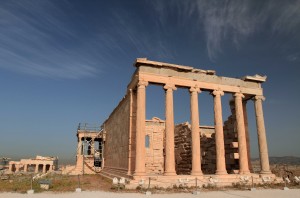
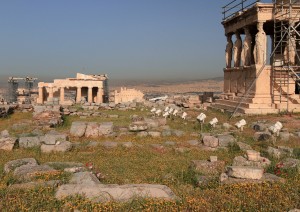
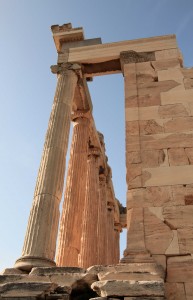
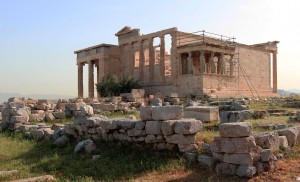
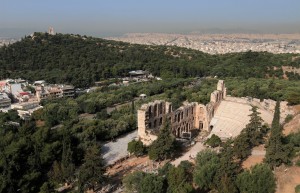
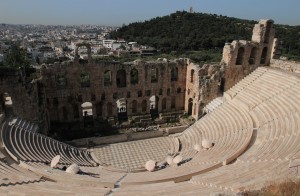
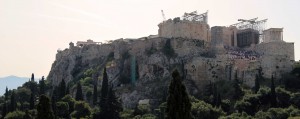
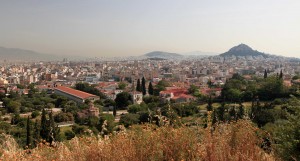
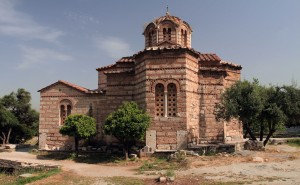
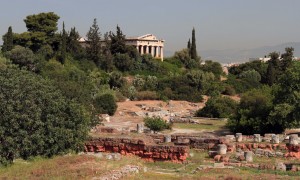
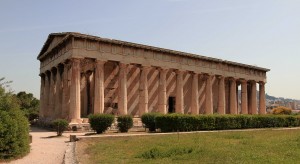
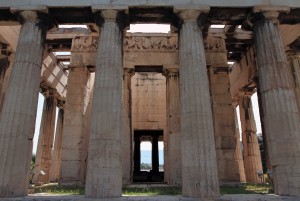
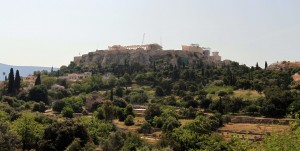
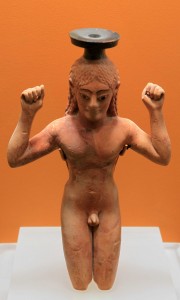
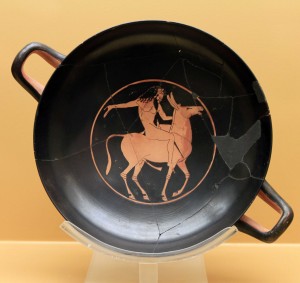
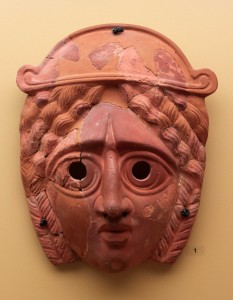
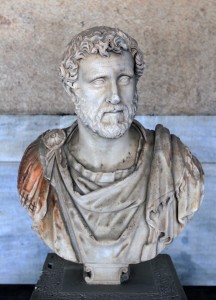
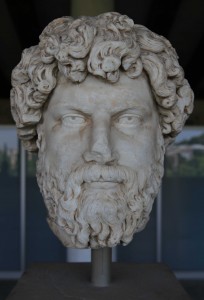
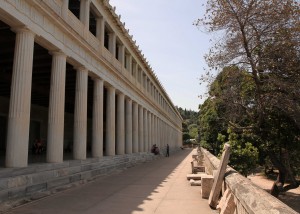
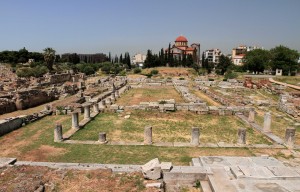
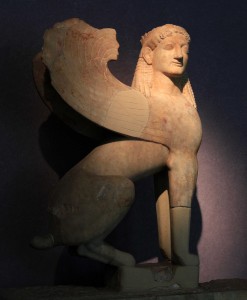
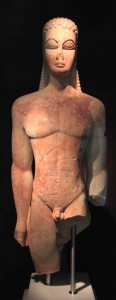
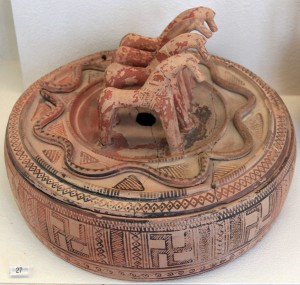
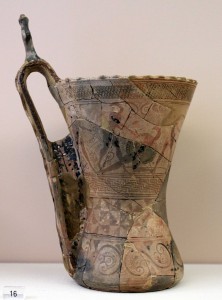
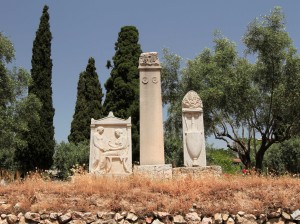
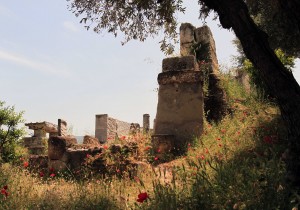
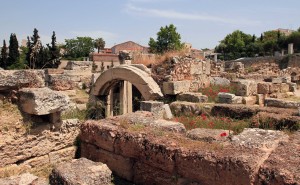
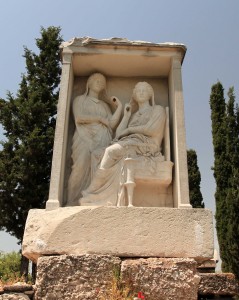
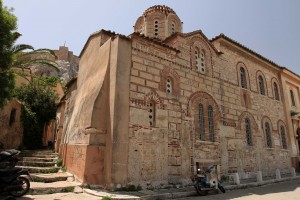
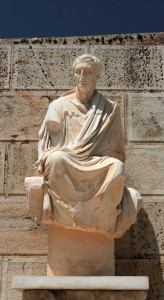
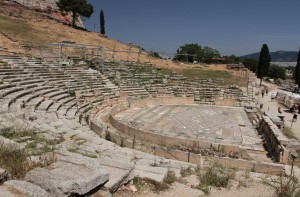
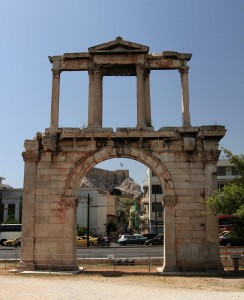
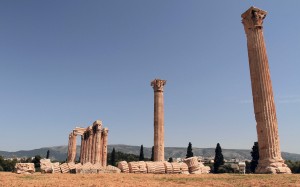
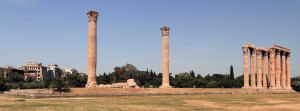
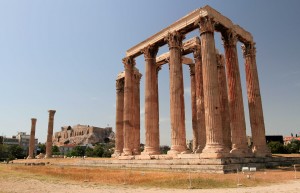
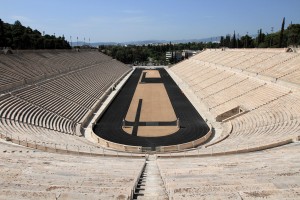
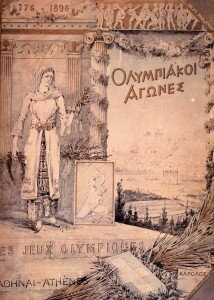
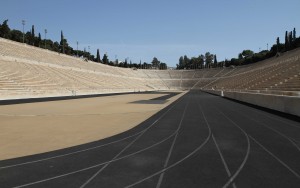
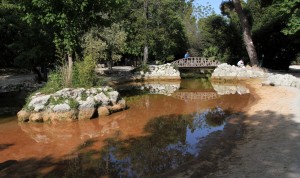
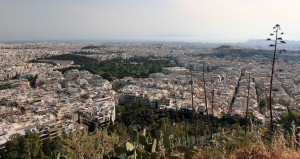
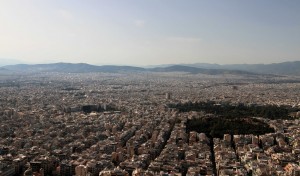
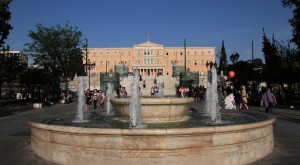
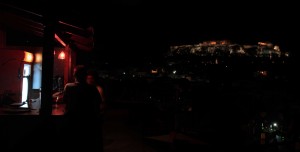
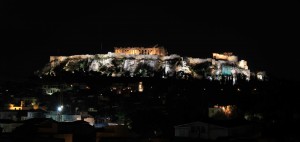
I actually managed to get up when my alarm rang at 06:55. I then showered, dressed, got ready, drank the carton of juice I bought last night, and then exited out the hostel. I swiftly walked up to the entrance to the Acropolis and reached the ticket booth at 07:55. I then waited in line, bought my ticket, and then walked up to the entrance, where there was a squad of Greek soldiers performing the morning flag ceremony. We had to wait for them to continue on up the path and we could not pass them until they entered the Acropolis, marched up to the flag pole, and hoisted the Greek flag up. As fortune would have it, I was the first tourist to reach the Acropolis (marching right behind the drill and ceremony squad) and for the next thirty minutes, there were few other tourists up at the top, thus allowing me to take many uncongested photographs (I was very glad I managed to wake up when I did). I first walked up to the Parthenon and studied its features. I then walked around and saw what was left of the Temple of Rome and Augustus, the Old Temple of Athena, the Erectheion, and the Pandroseion (a lot of memories from that Art History class I took in High School were resurfacing). I also took in all the views of Athens and the Ancient ruins visible from the Acropolis (i.e. Ancient Agora, the Temple of Olympian Zeus, etc.). Once done exploring everything, I exited out through the Propylaia, walked around the Monument of Agrippa, and viewed the Temple of Athena Nike, before exiting the site completely through the West Gate of a third-century AD fortification. I then walked over to the Odeion of Herodes Atticus (which I quickly passed by earlier when swiftly walking up to the Acropolis) and viewed it from the top of the seating area; the Odeion was built by Herodes Atticus in 162 AD in memory of his wife Rhegilla. Next, I continued on the exit path and walked out of the Acropolis archaeological site. I then walked to a nearby rocky outcrop and climbed up the marble steps to reach its top. From there, I had a nice view of Ancient Agora and the Acropolis (albeit, the sun was still in the east and making it difficult to properly photograph the Acropolis). Then, I followed a path down to the dirt road and walked to the entrance of Ancient Agora (the ticket to the Acropolis allows one to enter six other archaeological sites on the same ticket – this is one of them) and entered inside. I walked around Ancient Agora, visiting the Church of the Holy Apostles (which is built partly over the Nymphaion, having been constructed sometime around 1000 AD), the various ruins strewn all over the landscape (e.g. many old temples, stoas, homes, etc.), the Temple of Hephaistos (a Doric peripteral temple built in 415 BC), and the Stoa of Attalos (a completely restored building that once served as a place for Athenians to meet and do business; now it houses a museum and has many interesting artifacts on display). After exploring Ancient Agora, I exited the site, crossed over the metro train tracks, and walked to the Kerameikos archaeological site; Kerameikos was one of the largest districts in Ancient Athens and is where many of the potters resided; it is also the site of a cemetery with tombs dating back to the Bronze Age. I entered inside the site on my Acropolis ticket and walked to the museum to view the splendid statues on display (they had some really memorable ones like the winged Sphinx from the sixth-century BC and the “Sacred Gate Kouros” from 600-590 BC). After touring the museum, I walked around the ruins of the site; there were more funeral stelae around the site, but overall, it was a bit of a disappointment after having just been to the Acropolis and Ancient Agora. Once satisfied with my visit to the site, I walked to the Theater of Dionysus archaeological site, located on the south slope of the Acropolis (on the way, I bought a much needed sports drink and 1.5 liters of water – I was dying out in the sun today). The theater was worth checking out and walking around, but there wasn’t much else to see on the site other than some more ruins that would require a lot of imagination to properly visualize what they were once a part of. Next, I walked to the Temple of Olympian Zeus, passing by Hadrian’s Arch (a triumphal arch built in 132 AD to honor their benefactor emperor, Hadrian). I entered in to the archaeological site of the Temple of Olympian Zeus and walked around the remains of the colossal structure; construction to the temple began in the sixth-century BC during the rule of the Athenian tyrants, who envisaged building the greatest temple in the ancient world, but it was not completed until the reign of the Roman Emperor Hadrian in the second-century AD (some 638 years after the project had begun). After exploring the temple site, I then walked to the Panathenaic Stadium; the stadium hosted the first modern Olympic Games in 1896 AD and was reconstructed from the remains of an Ancient stadium that once occupied the site and was used to host the athletic portion of the Panathenaic Games, in honor of the Goddess Athena.; the Panathenaic Stadium is also the only stadium in the world to be built entirely out of marble. Upon reaching the entrance to the stadium, I bought my entrance ticket, received my audio guide, and I then toured the complex. It was a beautiful stadium and it was fun to be able to walk on the track in the center where one can even run laps if they so desire (I did not have any such desires because it was too damn hot). There was also a section (located in the old changing room area) dedicated to the modern Olympic Games, where posters from each one and several torches were on display. After walking around and up and down the stadium, I continued my tour of Athens by walking to the nearby National Garden (38 acres of vegetation with no entrance fee). The National Garden was nice, but not well groomed (like many of the botanical gardens I’ve been to on this trip) and was overall disappointing . . . but it was free and would make a nice place for picnicking and relaxing. After walking through the garden, I headed toward Mount Lycabettus. Upon reaching the base of the mountain, I walked up the path (I got quite the workout today with all the walking and sweating), to the top, where I had great views of the sprawling metropolis of Athens. Once I took in all the views and visited St. George’s Chapel on top, I took another path back downhill. Once back on city streets, I walked to Syntagma Square, where I saw the Old Royal Palace (on the way, I also witnessed the Greek Army’s Evzones soldiers (wearing a very old-style uniform that has its origins in the nineteenth-century AD) marching for the changing of the guard at the Tomb of the Unknown Soldier). After visiting the square, I walked back to the hostel, buying a chicken pita from the same place I ate at last night (the small size, not the extra-large I had last night) and a bottle of water from the nearby sidewalk mini market. Upon returning to the hostel (at 18:50), I walked up the stairs to the rooftop terrace, ate my pita, drank my water, and took some photographs of the Acropolis. I then returned to the dormitory room, showered, dressed in some fresh clothes, went through all the pictures I took (over 1,500!), and started typing today’s journal entry. I was holed up in the room until after 23:00, when I decided to go out and grab a chicken souvlaki pita (from the same place as before) and another water. With food and drink in hand, I made it up to the hostel’s rooftop terrace, ate my pita, drank my water, and had a few beers whilst conversing with a Mexican man staying in the same room and an American man staying at the hostel. Later, after midnight, the Korean guy from our room joined us. At one point I went downstairs, grabbed my camera and tripod, and returned to the terrace to take some night time photos of the Acropolis. Later on, when the bar shut down for the night (at 02:30), I helped the bartender lock up the place with large metal panels; for my service, she rewarded me with another beer (I actually just wanted to finish the one I had and go to bed, but she insisted and I relented). Then, after four beers and after 03:00, I returned to the dorm room and went to sleep.
Today was a long day and the sun was relentless (I applied sunscreen at four different times today just to ensure I wasn’t badly burned like many other tourists I’ve seen walking around); I’m looking forward to the next couple of days, primarily touring the insides of museums.
